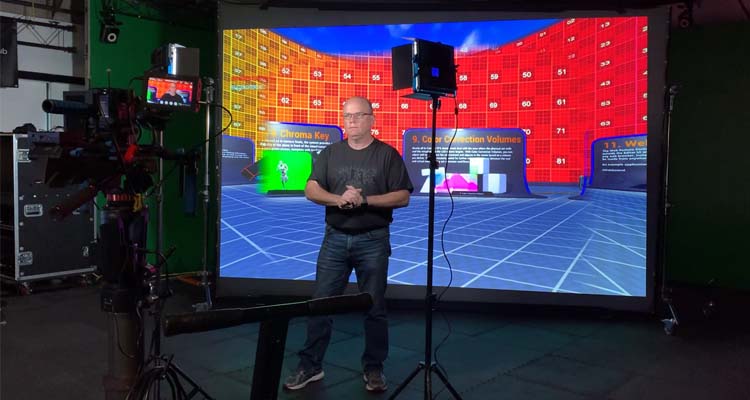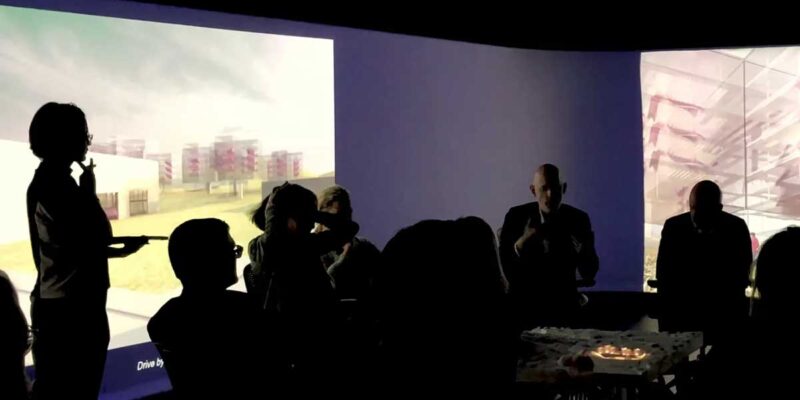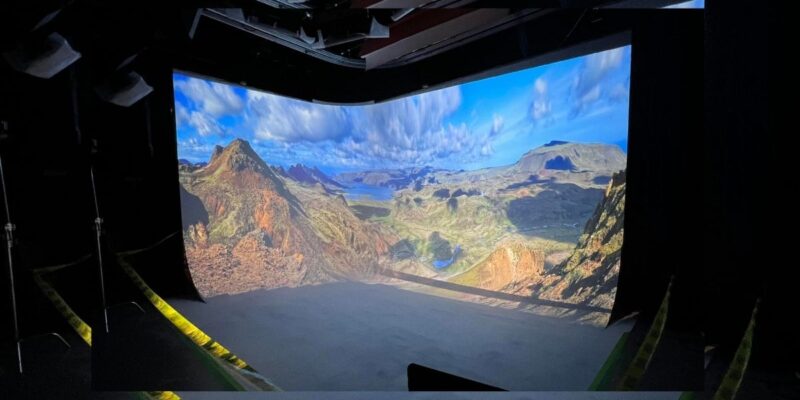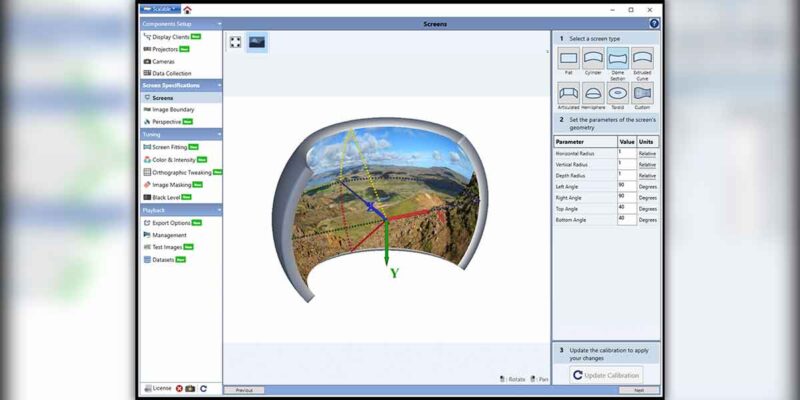Drexel University Westphal College of Media Arts and Design Collaborates With Scalable Display Technologies for Virtual Reality and Immersive Media Programs
 Drexel University Westphal College of Media Arts and Design launched one of the first accredited virtual reality and immersive media programs. In 2018, Drexel University’s Animation, Capture and Effects Lab, known as the ACE-Lab, introduced immersive media, including augmented reality (AR), virtual reality (VR) and other interactive experiences. Today, Drexel’s virtual reality and immersive media programs continue to be a leader in its field, teaching and engaging students with the latest processes and technologies.
Drexel University Westphal College of Media Arts and Design launched one of the first accredited virtual reality and immersive media programs. In 2018, Drexel University’s Animation, Capture and Effects Lab, known as the ACE-Lab, introduced immersive media, including augmented reality (AR), virtual reality (VR) and other interactive experiences. Today, Drexel’s virtual reality and immersive media programs continue to be a leader in its field, teaching and engaging students with the latest processes and technologies.
In early 2021, Drexel University introduced new immersive media technology that provides students with in-depth and hands-on learning experiences. Drexel University collaborated with Scalable Display Technologies to create a cost-effective, realistic solution for the traditional LED displays utilized in immersive environments.
“The typical immersive media environment is incredibly expensive,” said Nicholas Jushchyshyn, program director of VR and immersive media at Drexel University Westphal College of Media Arts and Design. “We wanted to utilize projection, rather than LED walls, to create a cost-effective solution. We worked with Scalable to create a high-quality solution for creating an immersive media environment without the cost of LED displays. We are utilizing a screen that is 10-feet wide and 12-feet height. It’s an existing screen that we have onsite. The talent has traditional studio lights on them, but they’re not overexposed and the projection background can be pure white. This is the result of two laser projectors that are synchronized, calibrated, warped and overlapped. It creates the same intensity from a traditional LED video wall, but it’s from two projectors. Scalable enabled us to take two laser projectors and stack the projections with a perfect overlay.”
The ACE-Lab is not only utilized for immersive media programs but also by many other graduate and undergraduate degree programs, including animation, visual effects and digital design. Drexel University needed to implement a system that would accommodate the other programs utilizing the space.
“For us, there were many advantages to utilizing projection instead of LED displays,” said Jushchyshyn. “Not only is it far less expensive, but it’s incredibly flexible if we want to utilize it in a different location. The space we’re using for production is a multipurpose space. We have designed the entire system on a mobile cart. We can retain the versatility of the room by being able to relocate the projectors. A secondary advantage of this particular approach is the future-proof design. We are currently utilizing a 12-foot wall, but we can add another wall in the future and create a full projection surface across a larger space. Utilizing Scalable’s software, we can project side-by-side and have an overlap blend between the images.”
Scalable’s software automatically warps and blends multiple projectors into one seamless display. It allows Drexel University to streamline recalibration if the system has been relocated. “We’ve been working with Scalable throughout the last 20 years,” said Jushchyshyn. “We are involved in dome projection and building projection, which is how we were originally introduced to Scalable. It wasn’t until the studio application where we had utilized Scalable in a very unique way. Scalable provides opportunities, in particular for schools and independent productions, to work with immersive media technology. They can incorporate the software implications and toolsets identical to feature film-grade LED walls, motion capture and camera tracking. It’s the same technology as a large production but at a more accessible price point.”




